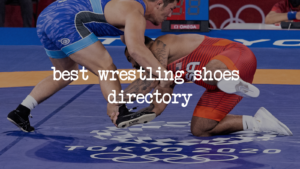Spoilers ahead for three old movies
Over the years there have been more than a dozen movies that have featured wrestling in some capacity, ranging everywhere from great to unwatchable, but never has one been able to capture the enjoyment and praise of both wrestling fans and non-wrestling fans alike. Some have appealed to one or the other, but none of them really seem to be a crossover hit. If such a movie could be made successfully, it could have a massive impact on bringing the sport into the mainstream and attracting new fans who have never actually participated. So how can this be accomplished?
The problem with most “wrestling movies” is that they don’t actually have anything to do with wrestling. In (almost) every one you can think of, wrestling is basically just a plot device that could be swapped out for any other sport without really changing the movie. Let’s take a look at a few of the most notable wrestling movies and figure out why they just don’t seem to cross the bridge between wrestling appeal and general interest.
Vision Quest (1985)
What kind of list would this be if it didn’t include Vision Quest? If you’re reading this article, then you’ve almost certainly already seen it, probably on a bus or at the behest of a coach, but for those who haven’t here’s a recap. Vision Quest is a surprisingly deep coming-of-age story about Louden Swain, a horny and introspective teenager who is worried he’s running out of time to make his mark on the world. The way he chooses to do this is by cutting 22 pounds to take on Brian Schute, human mountain and reigning state champion. Fate causes a 21-year-old artist named Carla to take residency in Louden’s house for a stretch. She distracts him from his “vision quest,” he learns from a slew of influential figures that your time on Earth gets meaning from what you choose to make meaningful, and eventually pulls off the upset with one of several lateral drops featured in the movie.
This movie is filled with memorable characters, inspirational lines, and a pretty existential theme. But despite it being heralded as the classic wrestling movie, the wrestling is pretty insignificant. If it was rewritten so that Louden was, say, attempting to beat the fastest guy in the state at the 400m, would the story have been much different? The only connection between the main character and wrestling is his insecurity about his manliness. If the goal is for a general audience to become enamored with the sport, then wrestling has to be shown thematically as more than just a display of machismo.
All of this could be somewhat forgivable if the wrestling scenes were given the respect they deserve, but sadly they are remembered as an inside joke that makes anyone who’s ever wrestled laugh at their absurdity. The officiating of the Schute match is criminal, every match ends in a lateral drop, and the coach even wears a singlet over his polo shirt. To garner true admiration from the wrestling fanbase, it’s crucial to get the intricate details right to show it was made by someone with a real knowledge of the sport. This adds little to the experience of a casual viewer, but goes a long way towards earning the respect of diehard fans.
Foxcatcher (2014)
If Vision Quest is barely about wrestling, Foxcatcher isn’t about wrestling at all. I actually think I would have had a better viewing experience if I had never wrestled. Foxcatcher is a movie about the real-life events surrounding millionaire John du Pont’s wrestling club Team Foxcatcher. It focuses on his relationship with Mark and Dave Schultz and depicts his decline into madness, culminating in his murder of Dave. From a purely objective view, it was an incredibly impressive movie, with fantastic acting, writing, and cinematography and was an interesting examination into du Pont’s insecurity and the forces that drove him to be the monster he was. Critical reception of the movie was outstanding, garnering 5 Oscar nominations, and it featured a star-studded cast including Steve Carrell, Channing Tatum, and Mark Ruffalo. If there’s a positive to take away, it’s the validation that wrestling is capable of being featured in a “good” movie by Hollywood standards. Also, a dozen actual wrestlers, including some legends and Mark Schultz himself, were given cameo roles in the movie, which was fun to see.
However, the positives end pretty much there. The actual depiction of wrestling and the culture around it was hard to watch. At times I wanted to stand up and tell the theater “It’s not actually like this normally!” The high praises that were sung for the movie meant that it drew crowds of moviegoers who were far removed from the sport of wrestling, and there really couldn’t be a worse first impression than Foxcatcher. Of the list of things that should be associated with the sport, unhealthy weight cutting, bribing of officials, substance abuse, and actual murder are not on it.
If the goal is to attract new fans to the sport, then a movie should open the viewers’ eyes to an exciting world that they would actually want to be a part of, particularly in a non-competition setting. Technique dissection, live go’s, dodgeball games, etc. could all be mesmerizing and fun to watch, even if viewers don’t understand all of what they are seeing. Foxcatcher by contrast opens the door to a dark, anguish-filled world in wrestling. At one point we saw Dave and Mark drilling and it genuinely looked like we were going to see some problem solving of Mark’s high crotch, but it devolved into Mark headbutting Dave in anger. Instead, we need a movie that shows the creative process and unique training methods that reveal that wrestling is much more than meets the eye.
Win Win (2011)
So we want a movie that tells an interesting story within the world of wrestling, features the positive aspects of the sport, and demonstrates an actual knowledge of wrestling? Well turns out we already have that. Win Win is the best wrestling movie ever made, and it’s not up for debate. For those unfamiliar, the story centers around a struggling New Jersey lawyer and high school wrestling coach named Mike who takes guardianship of an aging client named Leo for the $1500 per month stipend he pays. Against Leo’s will, he puts Leo in a nursing home and pockets the difference. The wrestling team he coaches is fairly talentless until Leo’s grandson Kyle runs away from his mother in rehab in Ohio to stay with Leo. Mike and his family take him in, and one day Mike brings him to wrestling practice where he learns that Kyle is a former Ohio state finalist. Kyle joins the team and starts turning his life around, quitting cigarettes, making friends, and having a happier demeanor. Eventually Kyle’s mom shows up looking to take custody of him and Leo and reveals the truth about Mike, making Kyle lash out. Mike begs Kyle for a second chance, gives the monthly stipend to Kyle’s mom, and takes on a second job in order to care for Leo and take custody of Kyle.
For Kyle, wrestling represents the one place in his life where he has control. Life has been cruel to him, and he’s continually at the mercy of all the people around him that seem to only be exploiting others for their own gain. On the mat he feels responsible for the outcome, and this provides relief for someone who has long been suffering from things beyond his control. He directly expresses this feeling of control to Mike, to which Mike relates and replies “Must be nice.” Mike’s understanding frames a parallel between the two and starts his arc towards realizing that he actually can be in control of his life if he stops looking for the easy way out, another pillar of wrestling virtue.
Beyond this, there are countless wrestling moments that display the exact qualities that make the sport so great. The emotional high of the whole movie is when Kyle finally gives his friend/teammate Stemler enough confidence to ask to be in the lineup for a match. Naturally the dual meet ends at his weight, and all he has to do is not get pinned or teched for the team to get their first win. Stemler takes a beating until the end of the third period when he is down by 14, on bottom, with a stall warning. Knowing the tech fall is imminent if he stays there, Mike gets down and echoes the “whatever the **** it takes” mentality that Kyle had taught to the team earlier. Stemler escapes and evades for the final 10 seconds, earning him a 14-1 loss and a 36-35 team victory. The catharsis of the ensuing celebration between Stemler and the team blows Louden Swain’s win out of the water, and is likely much more relatable to anyone who’s ever been on a wrestling team. He had to dig down deep and take a personal loss in order for the team as a whole to win; it’s the whole theme of the movie packed up into one match. There isn’t another sport that could have portrayed this so eloquently.
As far as the actual portrayal of wrestling, Win Win gets an A+. The level of detail is actually astounding. For the most part, they don’t rely on big flashy moves in the match scenes, but show actual good technique. The actor who played Kyle (Alex Shaffer) was a NJ State Champion in real life, adding to the authenticity and making the wrestling scenes look much more natural than choreographed. Before stepping on the mat, Kyle asks his coach for a Gable-esque slap in the face. For an insanely deep reference, Win Win came out in 2011, take a look at one of the Team Ohio singlets from 2010 and then at Kyle’s tattoos in the movie.
So why didn’t Win Win drive mainstream interest in wrestling? There’s a couple of reasons. First, it was released a decade ago in select theaters, so it really had to be on your radar for you to seek it out to see it. The landscape of today is much more centered around streaming, giving viewers the freedom to take a chance on a movie without a $10+ theater ticket price tag. But the main reason that Win Win didn’t drive new fans to wrestling and isn’t heralded as a classic of wrestling media is that Kyle isn’t the main character, Mike is. Kyle isn’t even introduced until 20 minutes into the movie. If we want people to feel a connection with the sport, then we need them to identify with the actual wrestler, rather than the struggling middle-aged family man who coaches him.
Where Do We Go From Here
We are certainly capable of producing a movie/show that appeases existing wrestling fans and strikes a chord with the general public. To do so, we need to have a deep character-driven story about a wrestler at a high level, whose personal arc extends beyond just wrestling. We need an inside look into the sport that reveals an exciting and complex world of creativity, comradery, self-reliance, and dedication. We need people from the wrestling world brought on board to guide the technical scenes and reveal some of the quirks and traditions that give the product authenticity. Lastly we need the acting, distribution, budget, and production value that accompanies an organization like Netflix. If a streaming service releases an original film with a recognizable cast and quality filmmaking, it can easily catch fire, reaching a huge audience, and hopefully igniting a genuine interest in the sport of wrestling.




